„The changing times are changing the artists”.
John Tagliabue
read more
Pre-auction exhibiton at the Królikarnia palace in Warsaw
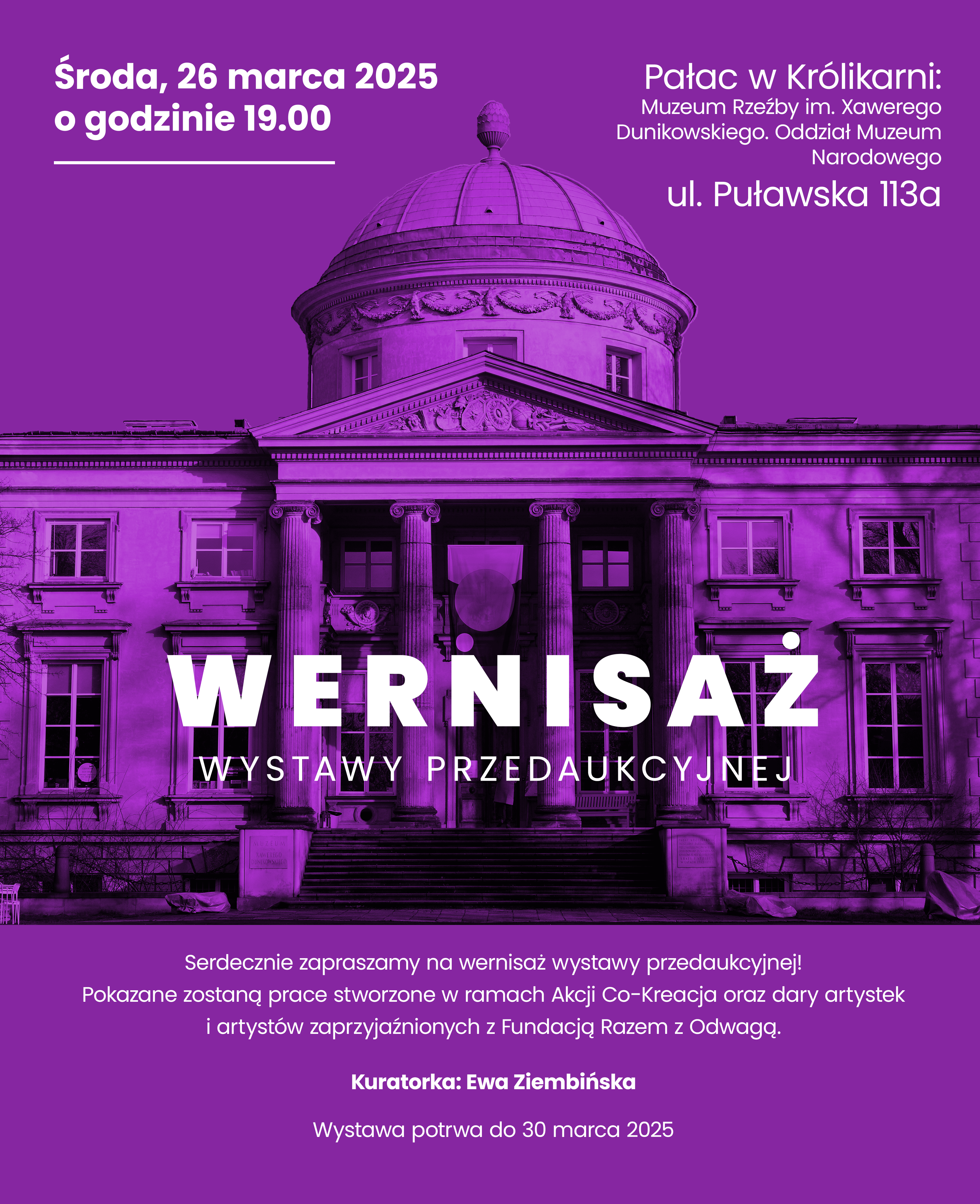
Opening of the exhibition “Words Reflect on Themselves” / Stefan Gierowski Foundation in Warsaw
Saturday, December 14, 2024, 6 pm
December 14, 2024 – March 9, 2025
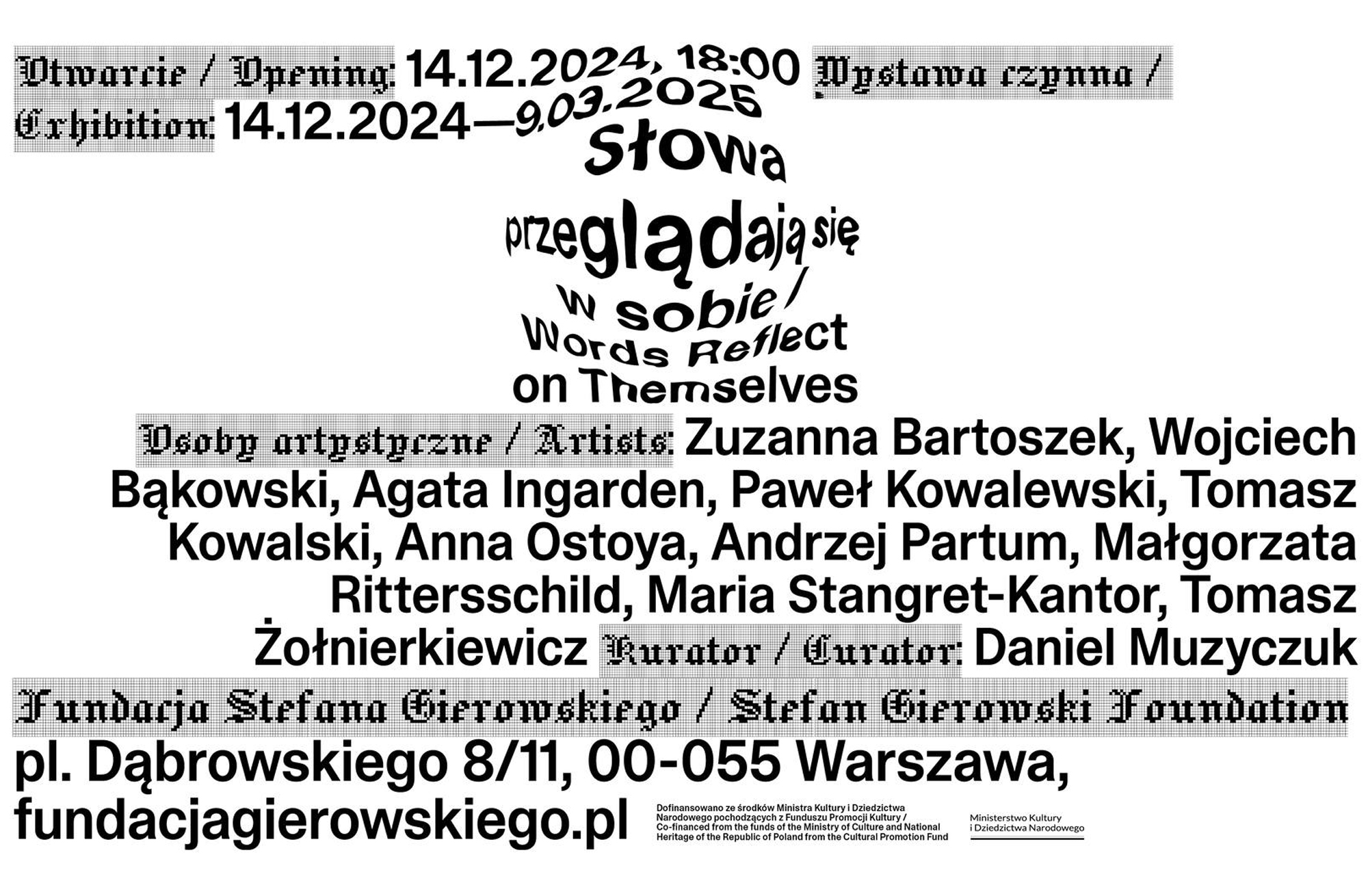
Finissage / The Failure of Reason exhibition
On the last day of Paweł Kowalewski's exhibition "The Failure of Reason", we invite you to a meeting with the artist and guided tour. During the finissage, a documentary film by Agata Milewska "Genius Without a Head, or an Artist Can Do Anything" about the work of Paweł Kowalewski will be presented. In addition to the artists themselves, the documentaries featured: Anda Rottenberg, Kuka Rittersschild, Leon Tarasewicz, Krzysztof M. Bednarski, Jarosław Modzelewski, Ryszard Woźniak, Ryszard Grzyb, Jerzy Porębski, Paweł Sosnowski, Zofia Gołubiew and Stefan Gierowski.
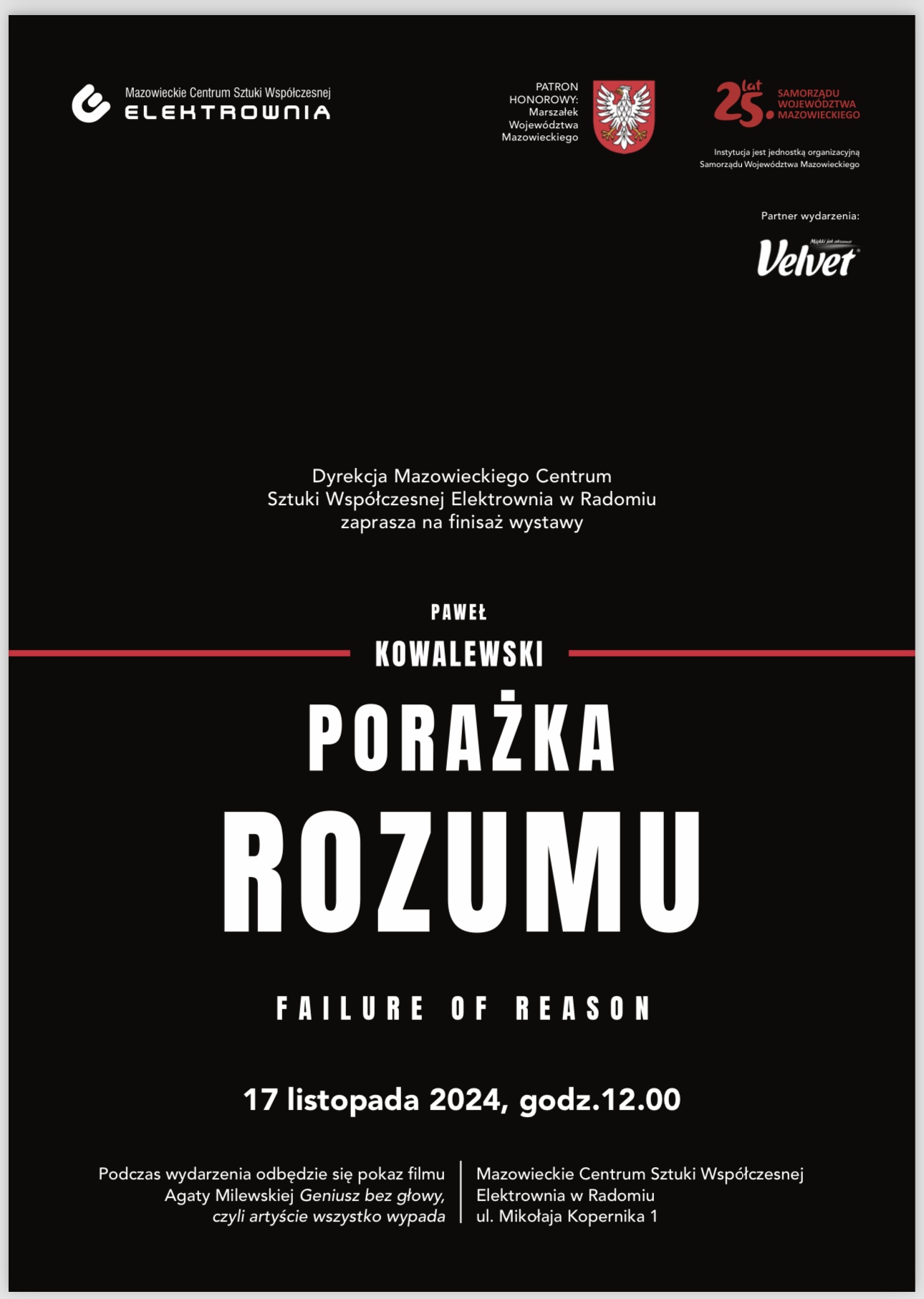
Charity auction: Friends in support POLIN Museum. Charity auction for the Association of the Jewish Historical Institute of Poland
- Friends in support POLIN Museum. Charity auction for the Association of the Jewish Historical Institute of Poland
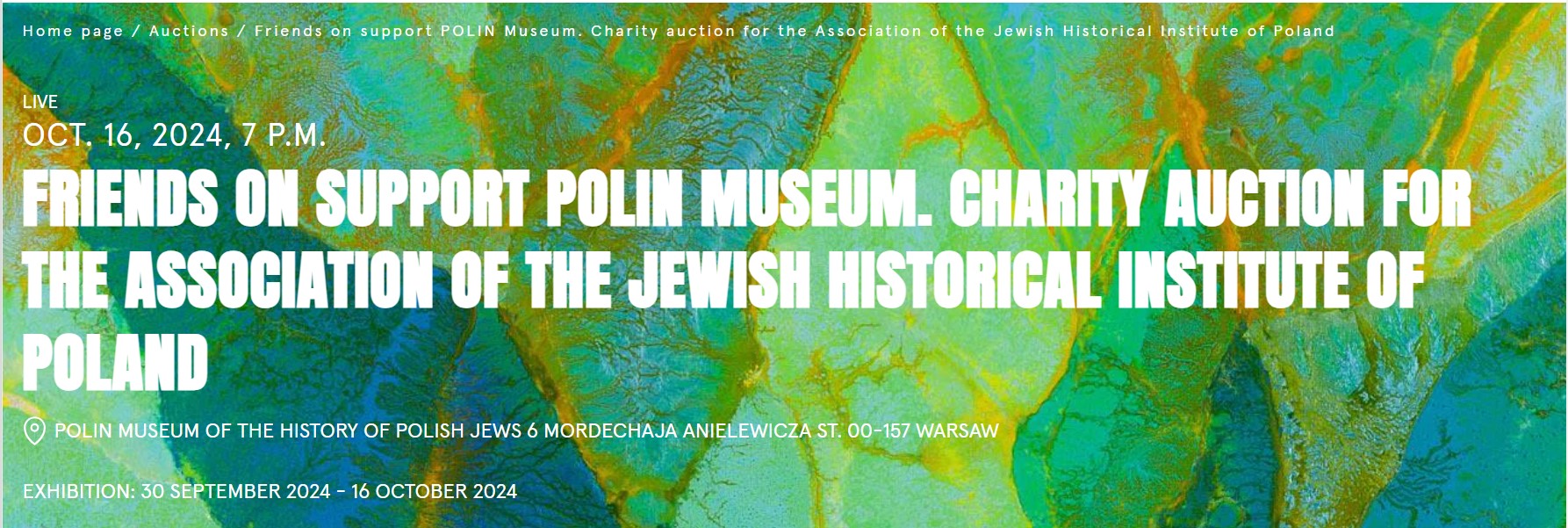
BOOK PREMIERE / ‘Art is everything’
‘Art is everything’ Pawel Kowalewski, Aleksander Hudzik LUNA HOUSE Paweł Kowalewski, one of the most recognisable Polish artists, in his book Sztuka to jest wszystko (Art is Everything) tells not only about his artistic and life choices, but also reflects on the condition of Polish art, and on what it means to be an artist today. This book, however, is not only about words, but also about images. Each copy comes with a special bookmark with a QR code, which will allow us to virtually hang one of Kowalewski's paintings in our home. Paweł Kowalewski is one of the founders of the legendary Gruppa, an icon of Polish art in the 1980s, as well as the author of such works as Mon Cheri Bolscheviq or Totalitarianism Simulator. His works have been exhibited in the most important museums and galleries around the world, and he himself was a long-standing lecturer at the Warsaw Academy of Fine Arts. In his book Art is Everything, the artist tells Aleksander Hudzik about his artistic beginnings, personal successes and failures, but this book is also an attempt to take a broader look at the Polish art market and its subsequent transformations. According to Kowalewski, art and the world around it are never separate entities, but rather connected vessels that directly influence each other. That is why he firmly admits that he believes art can change the world. And what about the artists themselves? Kowalewski has witnessed great careers that burst out unexpectedly and fade just as quickly, but he has also accompanied those personalities of the art world who have not allowed themselves to be pushed into obscurity over the years. What determines this? Kowalewski claims that talent and luck alone are not enough. You still need intelligence, the ability to be. ‘About this I made a series of postcards featuring Anda Rottenberg and Achille Bonito Oliva, among others. They wink at us from these 3D printed postcards. Because they know that art is the most important thing, but it is also a game in which you have to exist, know how to manage your career, make decisions, sometimes difficult, sometimes bad.’ The book Art Is Everything is not only a conversation, but also a cross-section of Paweł Kowalewski's most important works, which, brilliantly displayed, take the reader on a journey into the artist's extraordinary world. And thanks to augmented reality (AR), we can also experience the works in the book in an additional dimension. In each book, the reader will find a bookmark with a QR code. By pointing their phone's camera at the code, they will be redirected to an application that allows the reader to ‘try on’ the selected image on the wall in the selected room of their home. So far, augmented reality (AR) has not been used in any Polish publication. With this book, art can really take over us - both literally and figuratively. And all according to the principle that ‘art is everything’. O autorach: Paweł Kowalewski – artysta, emerytowany profesor ASP, założyciel legendarnej Gruppy, ikona polskiej sztuki lat 80. Autor znanych dzieł: „Mon Chéri Bolscheviq”, „Symulator Totalitaryzmu”, „Moc i Piękno”, „Pop Art” czy słynnego cyklu „Psalmy”. Prace Pawła Kowalewskiego wystawiane były m.in. w NS- DOK w Monachium, Castello di Rivoli w Turynie, Artistsʹ House w Tel Avivie, Galerii Isy Brachot w Brukseli. Część z nich znajduje się w największych polskich kolekcjach Muzeum Narodowego w Warszawie, Muzeum Narodowego w Krakowie, Zachęty – Narodowej Galerii Sztuki, Muzeum Jerke, a także Fundacji Sztuki Polskiej ING czy Fundacji Rodziny Staraków. Aleksander Hudzik – redaktor naczelny „Mint Magazine”. Dziennikarz kulturalny. Prowadzi podcast „I taki to jest miesiąc w kulturze” emitowany w radio newonce. Przez lata związany z redakcją tygodnika „Newsweek Polska”, magazynami „Vogue Polska”, „Notes na 6 Tygodni” „Forbes Women”, „Dwutygodnik”, „K Mag”, „Przekrój”, „Esquire” i „Aktivist”. Współautor tekstów w książkach My Art Guide, Polski Street Art i w przewodniku About Polska. Nominowany do nagrody Mariusza Waltera w 2024 roku w kategorii Młode Głosy Dziennikarstwa. Premiera książki odbędzie się 29 września o godzinie 14 w Zachęta Narodowa Galeria Sztuki podczas Warsaw Gallery Weekend. Książka w sprzedaży będzie od 30 września.

EXHIBITION / Paweł Kowalewski / Failure of Reason / Mazovian Centre for Contemporary Art "Elektrownia"
Kowalewski’s exhibition The Failure of Reason encompasses artworks created within the last seven years. It includes not only paintings but also sculptures, installations and works made with the use of photography. Kowalewski’s work is extremely diverse in terms of genres – it includes painting on canvas and paper, photography, sculpture, NFT, installations and ready-mades.
Characteristic for his style are conceptual and Dadaist commentaries and titles which the artist has given to his works from the beginning of his artistic activity. In his art, each artwork has a profound meaning, it is a commentary on reality, a reference to a literary text, personal life or history. The artist keenly watches absurdities and threats to the contemporary reality, and is not afraid to ask difficult questions through his art.
The exhibition presents pictures created in the years 2019–2014, inter alia a vast series Objects, in which the artist provocatively declares that his canvases are not paintings but objects and ostentatiously inserts them in decorative frames, whose style is far from the one currently encountered in exhibitions of contemporary art. At the Elektrownia you can also see the artist’s other artworks which escape easy classification.
The work which inspired the title of the exhibition is the installation Contempt for Reason – a brain levitating in space, made of Sterling silver and set with sapphires. The artist asks questions: Do we, contemporary society, hold reason in contempt? Has the era of reason given way to the era of applause? The exhibition also shows Kowalewski’s latest paintings and installations which so far have never been presented anywhere.
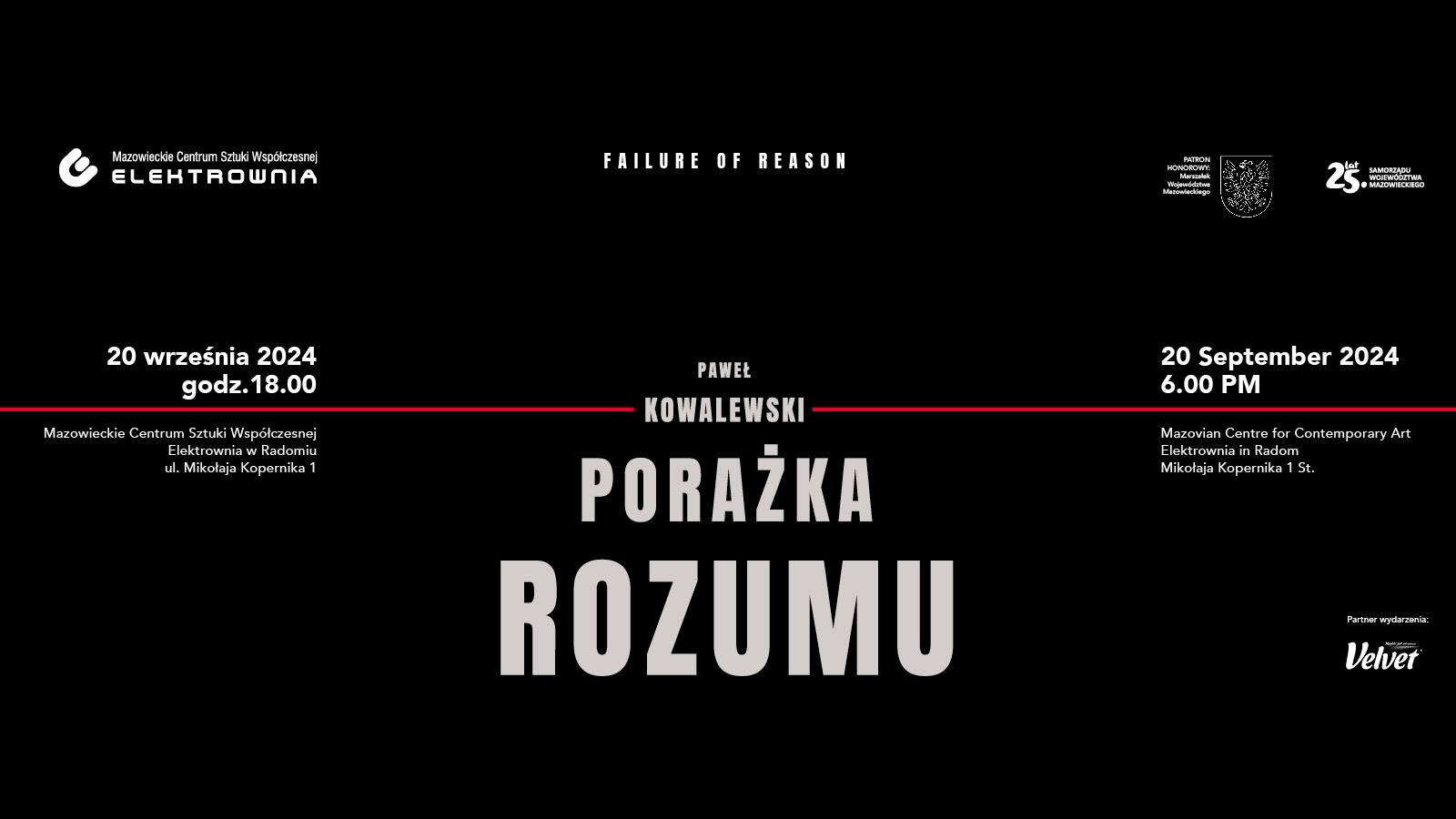
STÄRKE UND SCHÖNHEIT. STRENGTH AND BEAUTY / Polish Institute in Berlin
Disappearing portraits of Jewish women on view at the Polish Institute in Berlin at the exhibition by Paweł Kowalewski. A new exhibition of works from the "Strength and Beauty" series opens on July 9.
In 2015, Paweł Kowalewski created a series of disappearing paintings. “Strength and Beauty. "A very subjective history of Polish mothers" are large-format portraits of women of Jewish origin living during World War II, including a portrait of the artist's mother. The works were painted with a special paint that will fade completely over time, turning the portraits into abstract shadows.
It is a commentary on the human tendency to forget, disrespect or even contempt for history, which the artist perceives as extremely dangerous. The project is a tribute to young women who lived during the war and the heyday of the two largest totalitarian regimes. The works are accompanied by extremely moving stories of the portrayed heroines.
The exhibition was presented, among others, at The Artist's House gallery in Tel Aviv, the Museum of Photography in Krakow and the NS-Dokumentationszentrum in Munich. With each exhibition, the works fade more and more and disappear forever.
📌 The opening of the exhibition will take place on July 9, 2024 from 7 p.m. The exhibition will last until August 30, 2024. Admission is free. This is not to be missed!
[gallery ids="5894,5895,5896,5897,5898,5899,5900,5901,5902"]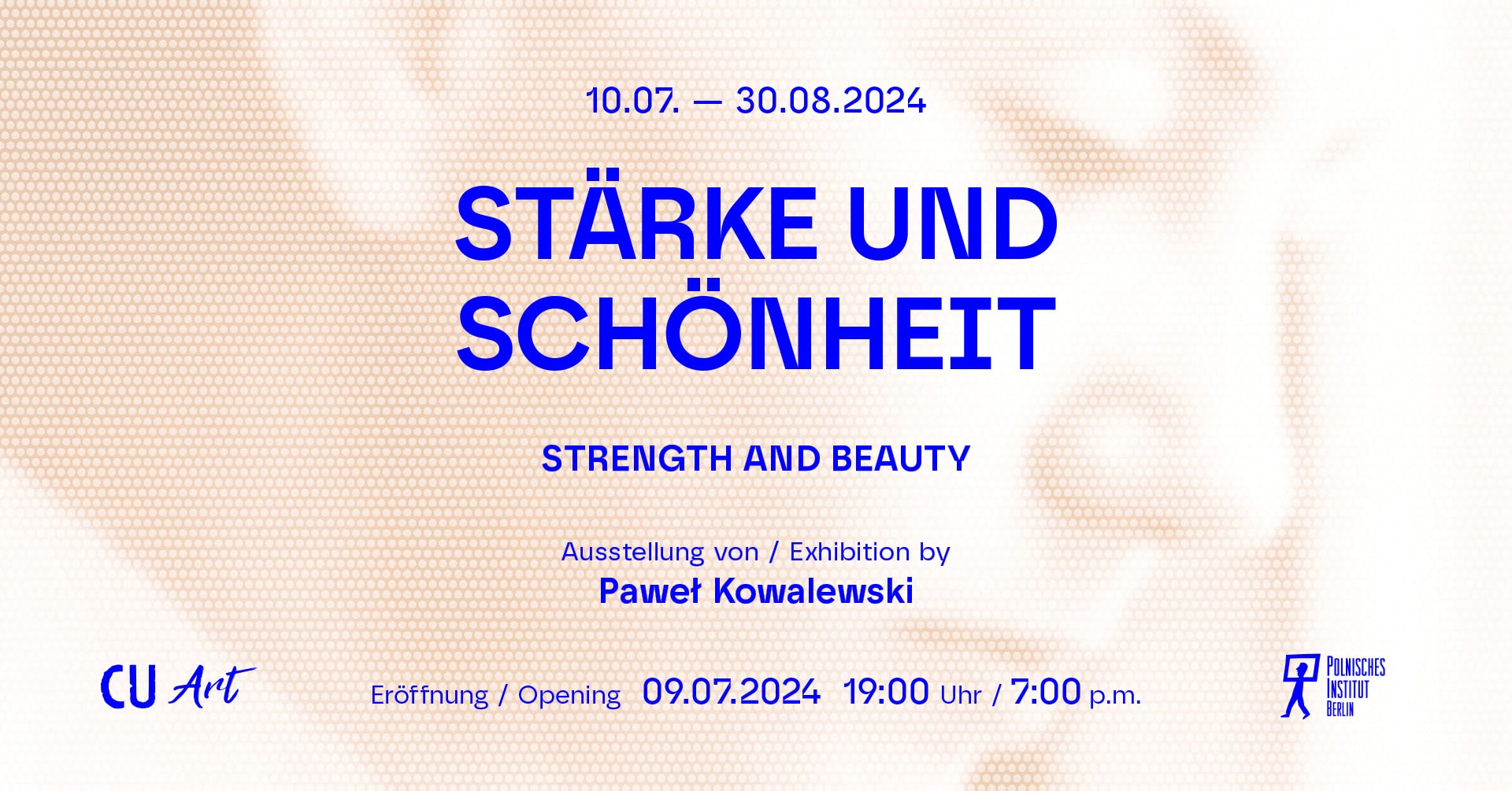
Food in Art / MOCAK THE MUSEUM OF CONTEMPORARY ART IN KRAKOW
Food in Art is the 11th exhibition in MOCAK’s flagship series Civilisation in Art, in which we confront important areas of life with the reflections of artists. We have previously looked at themes such as history, sport, economics, crime, gender, medicine, motherland, art, nature and politics. Food in this context has an exceptional position, since it is crucial to existence itself, which lends it significance in many areas of our lives.
Food is indispensable for satisfying one of the physiological needs at the very base of Maslow’s pyramid of the hierarchy of human needs – yet, in parallel – also a number of other of the higher order ones, psychological and social, such as a sense of social belonging or security. Vital for survival, food has shaped our civilisation. It has served as payment for labour; the process of its acquisition has powered the engine of progress. It was the search of food that triggered the migrations of peoples and thus led to the discovery of the world. Food scarcity has given rise to conflicts and contributed to social upheaval and bloodshed. To this day, food accompanies rituals and ceremonies and is the foundation of every community, culture and religion.
The exhibition will present the work of 66 artists from many different countries, exploring a variety of media such as painting, photography, video, object and installation. Taking part in a meal is a social activity, lays a basis for our identity and can serve as a tool of resistance. Contemporary artists take on board both the problems resulting from scarcity as well as those from an excess of food. The former can result in hunger and starvation, causing social inequality and individual indignity and leading to humanitarian crises and large-scale devastation; the latter manifest themselves in rampant or indeed debauched consumerism, accompanied by waste and the detrimental health effects of pursuing a poor-quality diet. Artists will analyse both the aesthetic potential of food, which art has explored for centuries as well as its ethical and philosophical dimensions.
Among other works, the exhibition shows two works by Paweł Kowalewski from the series "Exercises in aesthetics in which I grew up," created in the early 1990s.
The exhibition is open until March 16, 2025!
